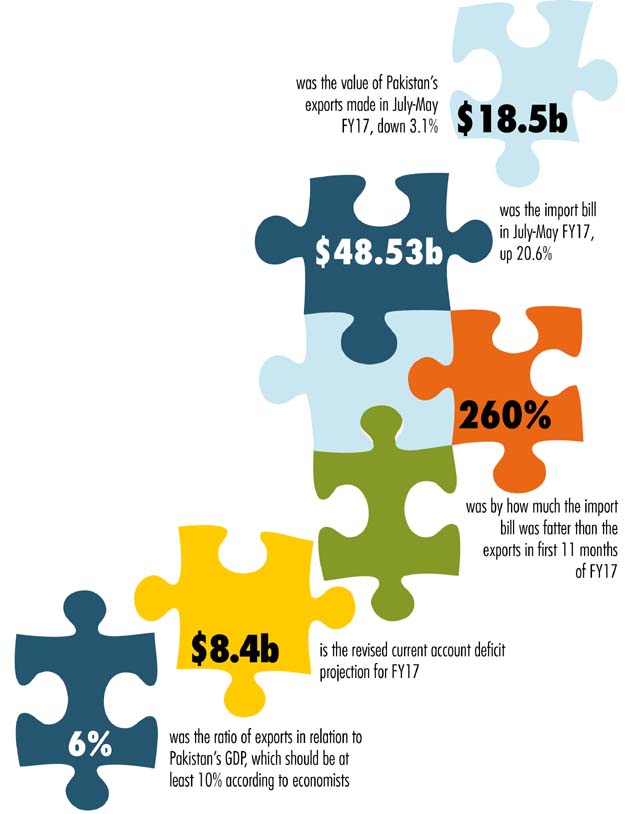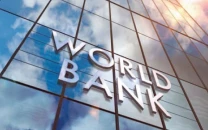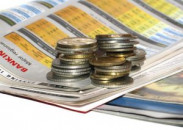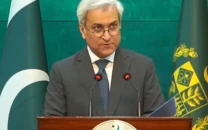Trade deficit soars to $30 billion, more borrowing likely
Imports remain high at $5b for third month in a row

PHOTO: REUTERS
The gap between imports and exports stood at $29.99 billion from July to May in fiscal year 2016-17, which was 42.1% or $8.9 billion more than the comparative period of previous year, Pakistan Bureau of Statistics (PBS) announced on Monday.
World Bank approves $450m for balance of payments, budget support
For the third straight month, the trade deficit breached the previous highest record and reached $30 billion.
Imports remained at high levels and were valued at $5 billion for the third consecutive month - the sole reason behind the uncontrollable trade deficit. The 11-month trade gap was $9.5-billion higher than the annual target of $20.5 billion, which was set by the Ministry of Finance at the beginning of FY17.
The fresh statistics have deepened concerns about long-term sustainability of the external sector, which the government is maintaining by borrowing from foreign countries and commercial banks.
Cheap imports have started hurting the import-substitution industries, according to experts. A strong rupee against the US dollar has made the imports cheaper.

CREATIVE COMMON
Owing to the swelling trade deficit, the balance of payments of the country is now projected to worsen to levels never anticipated by the finance ministry. In its budget documents, the ministry has now revised the current account deficit projection to $8.4 billion for the outgoing fiscal year, which again appears to be at the lower end.
Exports fell 3.1% to only $18.5 billion in July-May FY17, which were $591 million less than the goods shipments reported in the comparative period of previous year.
Compared to this, the import bill fattened 20.6% to $48.53 billion in July-May FY17. In absolute terms, imports were $8.3 billion higher than the previous year.
Another worrying indication was that the 11-month import bill was 260% higher than exports of the country. The import bill was equal to 108% of the annual import projection made by the finance ministry. Contrary to this, exports in 11 months were only three-fourth of the annual target of $24.8 billion.
Independent economists say the ballooning trade deficit has finally exposed vulnerabilities of Pakistan’s economy as financing such a huge gap in the midst of slowing foreign remittances and low foreign direct investment has become a challenge for the government.
It will be the fourth consecutive year when the PML-N government will miss its annual export target, though Pakistan enjoys duty-free status for its exports to the European Union. Exports were only 6% of the estimated size of Pakistan’s economy called the gross domestic product (GDP).
Exports are not picking up despite offering two incentive packages to the exporters. However, these packages have remained partially funded, causing resentment among exporters.
There is a consensus among government and independent economists that exports must be at least 10% of GDP for sustainability of the country’s external sector.
Owing to lower exports, one-fourth of the export receipts went for external debt servicing in July-March FY17.
Monthly data
On an annual basis, the trade deficit in May was 60.8% more than the comparative period of previous year and the main reason was record imports worth $5.1 billion in the month, showed PBS data.
Growth improves, but targets missed
The trade deficit stood at $3.5 billion in May, which in absolute terms was $1.3 billion higher than the deficit in May 2016. Exports in the month dropped almost 11% to only $1.63 billion.
On a month-on-month basis, exports in May slumped almost 10% over exports recorded in April. In absolute terms, the exports were down $178 million. There was a marginal growth in imports on a month-on-month basis.
Published in The Express Tribune, June 13th, 2017.
Like Business on Facebook, follow @TribuneBiz on Twitter to stay informed and join in the conversation.



















COMMENTS
Comments are moderated and generally will be posted if they are on-topic and not abusive.
For more information, please see our Comments FAQ